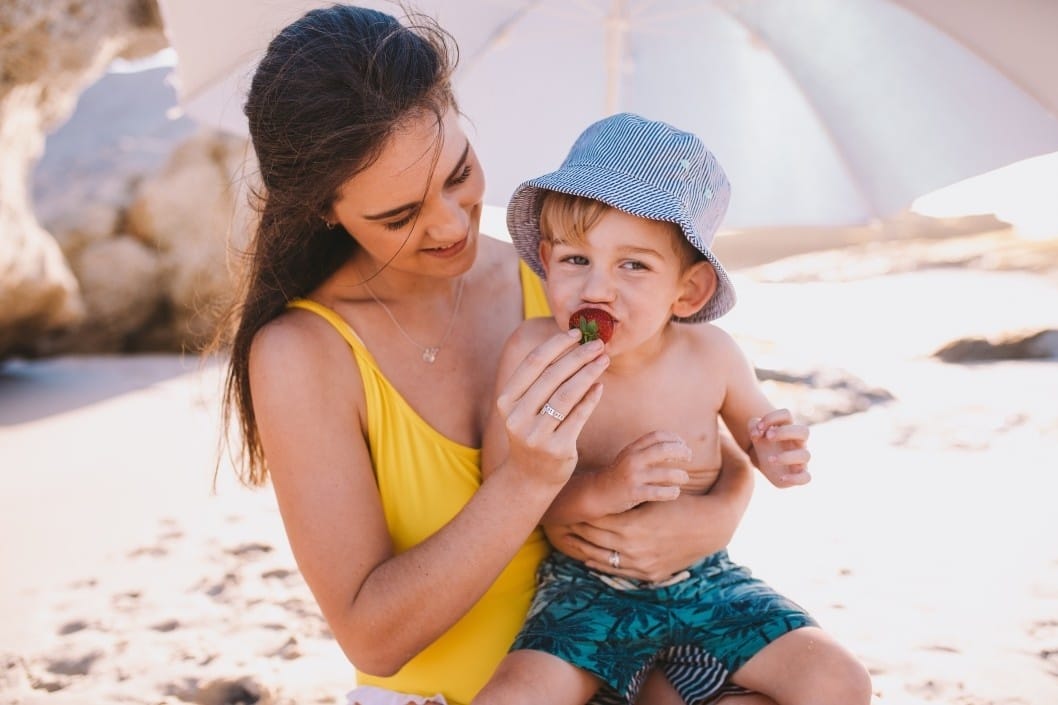9 ways to teach your kids to trust their instincts about food

The best way to teach our kids to eat well is to encourage them to trust themselves too; to listen to their bodies' cues about hunger, fullness and comfort.
Table of Contents
- In fact, they're probably even better at it than we are. Here are nine ways you can help them stay connected to those essential eating instincts.
- 1. We are born knowing when we're hungry and when we're full.
- 2. Food is more than fuel.
- 3. Fed is best.
- 4. How your kid eats matters more than what they eat (or how much).
- 5. Don't apologize for your own hunger or your food choices.
- 6. Remember that nutrition is not gospel.
- 7. Some foods serve us and some foods don't.
- 8. All bodies are valuable and worthy of respect.
- 9. Remember that all of this is an ongoing process that we begin again at every meal.
Before I became a mom, I thought that feeding my child well was something I could just learn from experts. If I found the right lactation consultant, if I read the right books on baby-led weaning, it would all click into place.
Then my oldest daughter, Violet, was born with a rare congenital heart condition. The birth defects went undetected on my prenatal ultrasounds, so I spent the first month of her life snuggling, loving and most of all, feeding her—without any idea that she was dangerously ill. When our breastfeeding sessions went from 45 minutes to 20 minutes to 6 minutes, I thought we were getting more efficient. I didn’t know my baby was starving.
The day before Violet’s 1 month birthday, she went into heart failure and nearly died. We were rushed to the nearest children’s hospital and they saved her life. But the unexpected side effect of their essential-yet-traumatic medical interventions was that Violet stopped eating.
She developed what’s known medically as an oral aversion, where babies learn to associate anything coming near their mouth with pain and fear. And so, suddenly, all of the experts I’d found, all of the plans, all of the “common sense” advice about feeding kids (like “just let them get hungry!”)… no longer applied.
We spent the next two years helping Violet heal from that early trauma and feel safe around food again. In the process, I realized just how many of us don’t feel safe around food or have complicated relationships with how we eat and how we think our kids should eat that make it almost impossible to feel good about what’s happening at our family dinner table.
Violet began eating again—began experiencing hunger again—when food once again offered comfort and pleasure, just as our early nursing sessions had in the first days of her life. That’s when I understood that a healthy relationship with food isn’t something that you can outsource. We have to start from a place of trusting our bodies and trusting our own instincts around food. And the best way to teach our kids to eat well is to encourage them to trust themselves too; to listen to their bodies’ cues about hunger, fullness and comfort.
In fact, they’re probably even better at it than we are. Here are nine ways you can help them stay connected to those essential eating instincts.
1. We are born knowing when we’re hungry and when we’re full.
Healthy newborns cry to be fed and fall asleep when satiated. We don’t have to be taught to have these feelings, but we can be taught to ignore them. By age three, children have naturally disconnected a bit from their eating instincts because they’ve been socialized to eat with their families. But when parents push messages about “three more bites of broccoli” or “you’re eating too much pasta and not enough chicken” on their kids, what we’re really saying is “don’t trust your body; trust me. I know more about how you should eat.”
In fact, nobody can judge another person’s hunger or nutritional needs. Research shows that kids eat best when we give them a degree of autonomy at the table; offer a variety of foods and let them determine how much to eat (and even whether to try everything on offer).
2. Food is more than fuel.
Eating is so essential to human survival that our bodies have evolved multiple mechanisms to ensure we eat—and feed our young. And hunger pangs are just the start; when parents feed babies, our heart rates slow, levels of stress hormones drop and oxytocin and other “feel good” hormones rise. Babies experience similar benefits. In this way, the need to eat isn’t just about physical nourishment—it also ensures that babies form secure attachments. It’s how we fall in love.
3. Fed is best.
This is true when you’re feeding a baby and it will still be true when you’re packing their elementary school lunch boxes: That PB&J with the crusts cut off that you know they’ll eat is probably a better bet than the Instagram-inspired bento box full of unfamiliar foods. PS. “Fed is best” is also true when you’re feeding yourself—if you’re hungry, you are always better off eating something than depriving yourself because it doesn’t feel like the “right” thing.
4. How your kid eats matters more than what they eat (or how much).
Food and love are inextricably linked in most families, but so are food and power. Children who are subjected to high-pressure feeding tactics grow up with more anxiety around food. You don’t have to short-order cook, but you can serve family meals that offer at least one thing everyone can eat (it’s fine if most nights, that’s bread and milk!). Then trust everyone at the table to take it from there.
5. Don’t apologize for your own hunger or your food choices.
Hunger is normal. Liking some foods and disliking others is normal. Model that for your kids by owning your own choices. When they hear us shame foods or ourselves for eating foods, they internalize those messages.
If you’re stuck in a cycle of feeling negative about food and your body, it can be helpful to ask, “Is this how I’d want my daughter or son to eat? And is this how I’d want them to feel about food?” Then give yourself the same permission.
6. Remember that nutrition is not gospel.
In fact, it’s more often an unsolvable Rubik’s cube of conflicting advice and sketchy data. You can view the goals of health and a more sustainable food system as deeply worthwhile, but not so all-encompassing that they dictate how your family behaves at every meal. Sometimes we’re going to eat a lot of cookies. Other days, we’re going to eat salad. We’re not better or worse people for making those choices and when you prioritize meals that taste good and truly satisfy your hunger, nutrition has a way of taking care of itself.
7. Some foods serve us and some foods don’t.
If your family is dealing with an allergy or a food intolerance, you can make choices to support that person’s health without making a moral judgment about the food that isn’t working for them. No matter what the wellness industry claims, gluten isn’t evil. (Neither are eggs, dairy, peanuts… you get it.) There’s no need to demonize foods or food groups just because it doesn’t agree with someone in your house. Focus instead of everything they can eat.
8. All bodies are valuable and worthy of respect.
Even the ones that our culture deems unattractive or unhealthy. Talk to your kids about what their bodies can do, not how they look. Avoid talking negatively about your own body around them, and stop body shaming in its tracks when you encounter it in the world.
9. Remember that all of this is an ongoing process that we begin again at every meal.
Don’t beat yourself up if you make a dinner nobody eats or find yourself falling back into old habits of pressure or food anxieties. You’ll get to try again in a few hours. The only way to learn to eat is by eating.


































